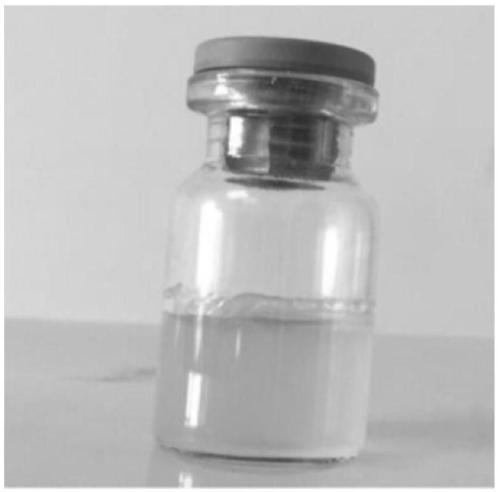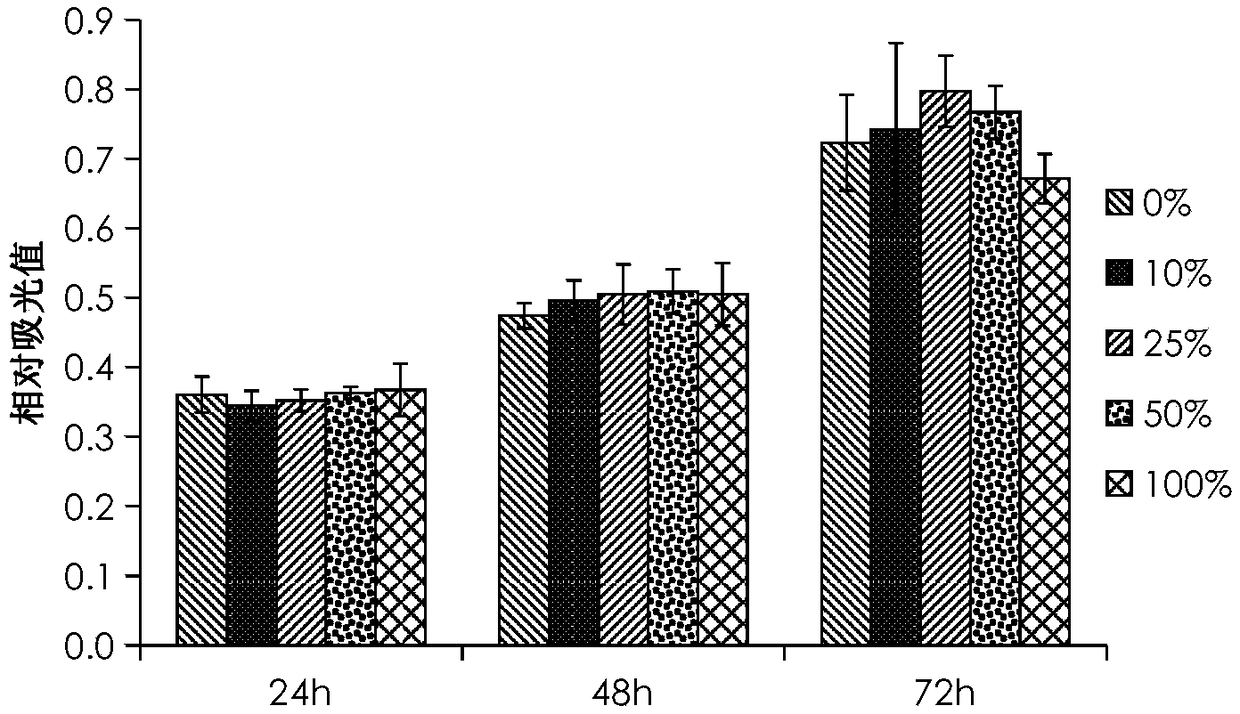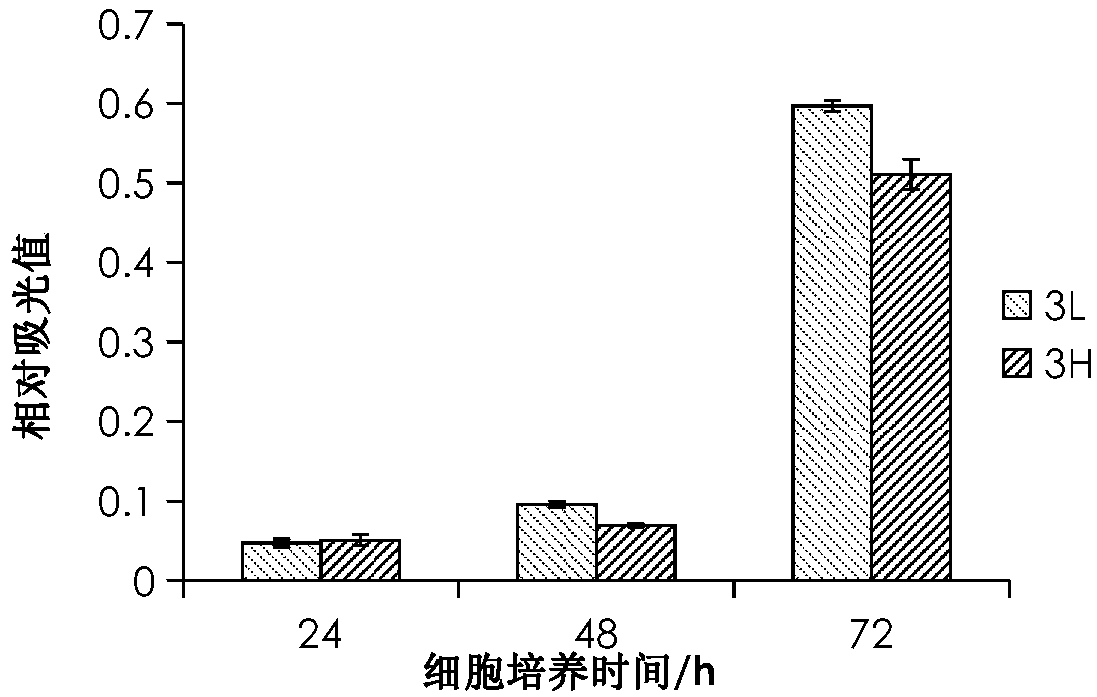Preparation method, printing method and application of bioprinting ink
A bio-printing and bio-printer technology, applied in inks, applications, household appliances, etc., can solve the problems of complicated printing process and long time, and achieve the effects of good biocompatibility, low price and easy preparation
- Summary
- Abstract
- Description
- Claims
- Application Information
AI Technical Summary
Problems solved by technology
Method used
Image
Examples
Embodiment 1
[0028] Embodiment 1 Preparation of bioprinting ink
[0029] Weigh 12g of gelatin, 4.8g of sodium alginate, and 3g of hydroxyethyl cellulose, stir well in a square petri dish, and irradiate with ultraviolet light for 18 hours; In the bottle, heat it with magnetic stirring at 80°C for 2 hours; after it is completely dissolved, place it at room temperature for 2 hours, then place it in an oven at 80°C for 1 hour, and repeat this 3 times to obtain sterile bioprinting ink, as figure 1 shown.
Embodiment 2
[0030] Embodiment 2 Preparation of bioprinting ink
[0031] Weigh 4g of gelatin, 8g of sodium alginate, and 5g of hydroxyethyl cellulose, stir well in a square petri dish, and irradiate with ultraviolet rays for 18 hours; , heated with magnetic stirring at 80°C for 2 hours; after it was completely dissolved, it was placed at room temperature for 2 hours, and then placed in an oven at 80°C for 1 hour, and this was repeated 3 times to obtain sterile bioprinting ink.
Embodiment 3
[0032] Example 3 Preparation of bioprinting ink
[0033] Weigh 20 g of gelatin, 1 g of sodium alginate, and 0.5 g of hydroxyethyl cellulose, stir well in a square petri dish, and irradiate with ultraviolet rays for 18 hours; add the above-mentioned irradiated components and 78.5 mL of sterile saline In the bottle, heat it with magnetic stirring at 80°C for 2 hours; after it is completely dissolved, place it at room temperature for 2 hours, then put it in an oven at 80°C for 1 hour, and repeat this 3 times to obtain sterile bioprinting ink.
PUM
 Login to View More
Login to View More Abstract
Description
Claims
Application Information
 Login to View More
Login to View More - R&D Engineer
- R&D Manager
- IP Professional
- Industry Leading Data Capabilities
- Powerful AI technology
- Patent DNA Extraction
Browse by: Latest US Patents, China's latest patents, Technical Efficacy Thesaurus, Application Domain, Technology Topic, Popular Technical Reports.
© 2024 PatSnap. All rights reserved.Legal|Privacy policy|Modern Slavery Act Transparency Statement|Sitemap|About US| Contact US: help@patsnap.com










